You searched for: 谷歌推广排名怎么做的【TG飞机:@bapingseo】代谷歌竞价seo投放靠谱【TG电报:@bapingseo】斯洛伐克引流推广工具【Telegram:@bapingseo】彩智彩票助手购彩v8app下载久旺28喜运官网登录?8tAwwm/vL8XpX.html
<< Previous | Displaying results 201-225 of 417 for "谷歌推广排名怎么做的【TG飞机:@bapingseo】代谷歌竞价seo投放靠谱【TG电报:@bapingseo】斯洛伐克引流推广工具【Telegram:@bapingseo】彩智彩票助手购彩v8app下载久旺28喜运官网登录?8tAwwm/vL8XpX.html" | Next >>
-
The 9th Armored Division during World War II
ArticleThe 9th Armored Division participated in major WWII campaigns and is recognized for liberating Zwodau and Falkenau an der Eger, Flossenbürg subcamps, in 1945.
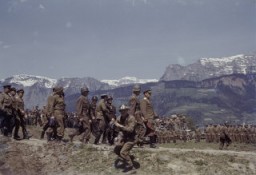
-
At the Killing Centers
ArticleThe Nazis established killing centers in German-occupied Europe to mass murder Jews. Learn more about what happened to Jewish people at these killing centers.
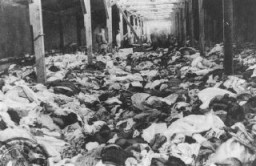
-
Bosnia
ArticleIn July 1995, Bosnian Serb forces killed as many as 8,000 Bosniaks from Srebrenica. It was the largest massacre in Europe since the Holocaust.
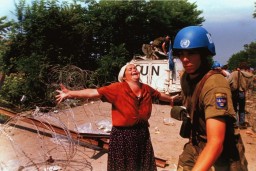
-
Timeline of the German Military and the Nazi Regime
ArticleKey dates illustrating the relationship between Germany’s professional military elite and the Nazi state, and the German military’s role in the Holocaust.
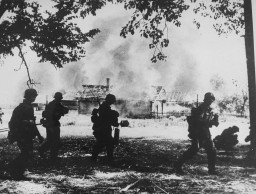
-
The Eastern Front: The German War against the Soviet Union
ArticleOften referred to as the “eastern front,” the German-Soviet theater of war was the largest and deadliest of World War II. Learn more about the background and key events.
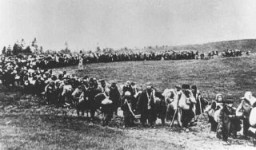
-
Axis Powers in World War II
ArticleThe three principal partners in the Axis alliance were Germany, Italy, and Japan. Learn more about the Axis powers in WW2.

-
Columbia-Haus
ArticleThe Columbia-Haus camp was one of the early camps established by the Nazi regime. It held primarily political detainees. Learn more about the history of the camp.
-
Incitement to Genocide in International Law
ArticleAfter the Holocaust, the IMT charged the first case of “incitement to genocide.” Learn more about the crime and its application in modern genocide law.
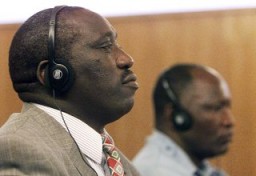
-
Lachwa
ArticleThe Lachwa ghetto was established in Łachwa, Poland in April, 1942. Learn more about the ghetto and uprising.
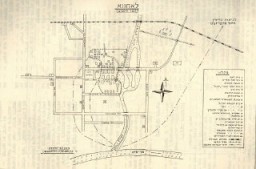
-
Chelmno
ArticleThe Chelmno killing center was the first stationary facility where poison gas was used for mass murder of Jews. Killing operations began there in December 1941.

-
Oradour-sur-Glane
ArticleIn 1944, Waffen-SS troops massacred residents of Oradour-sur-Glane, a small village in France. Learn about the German occupation and destruction of the village.
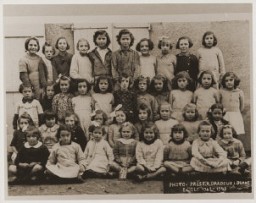
-
Moshe Galek
ID CardMoshe was one of eight children born to Jewish parents in Sochocin, a predominantly Catholic village near Warsaw. Moshe was a self-made man, having founded a successful pearl-button factory in the village. While in his thirties, he married Fela Perznianko, the daughter of a prominent attorney from nearby Zakroczym. He brought his new wife to Sochocin, where they raised four daughters. 1933-39: In 1936 the Galeks moved to Warsaw, attracted by the city's cultural life. When Germany invaded Poland on…
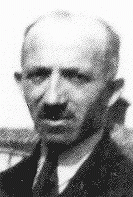
-
Albert Gani
ID CardAlbert and his family lived in Preveza, a town with a Jewish population of 300 that was located on the Ionian seashore. Albert's father had a small textile shop. The Ganis were of Romaniot descent, Jews whose ancestors had lived in Greece and the Balkans for more than a thousand years. 1933-39: After graduating from high school, Albert assisted his father in the family textile shop. A quiet and reserved young man, Albert enjoyed spending time at home with his family. Albert loved taking excursions with…
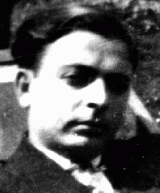
-
Rosalia Wourgaft Schatz
ID CardRosalia was raised by Jewish parents in the small, predominantly Jewish industrial city of Tulchin in southwestern Ukraine. She married Aaron Schatz, and together they raised four children in the city of Odessa. In 1919, when her family was grown, Rosalia and her daughter Ludmilla immigrated via Romania to France after Aaron was killed during the Russian civil war. 1933-39: Rosalia settled in Bagneux, a suburb of Paris. She spoke only Russian and Yiddish and found Paris to be a different world from the…
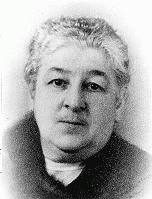
-
Wolfgang Kusserow
ID CardWhen Wolfgang was an infant, his parents became Jehovah's Witnesses. His father moved the family to the small Westphalian town of Bad Lippspringe when Wolfgang was 9. Their home became the headquarters of a new Jehovah's Witness congregation. Wolfgang and his ten brothers and sisters grew up studying the Bible daily. 1933-39: The Kusserows were under close scrutiny by the Nazi secret police because of their religion. As a Jehovah's Witness, Wolfgang believed that his highest allegiance was to God and His…

-
Dezider Gruenberger
ID CardDezider was the oldest of three children born to Hungarian-speaking Jewish parents in the city of Kosice in the southeastern part of Czechoslovakia known as Slovakia. As a young boy, he attended a Jewish elementary school. His father was a tailor whose workshop was in the Gruenberger's small apartment. 1933-39: After Dezider finished elementary school, he entered secondary school with a view to going on to the university. The language of instruction was Slovak, and Jews faced no discrimination until…
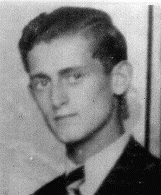
-
Alfred (Fredl) Krakauer
ID CardAlfred was the fifth of six children born to Jewish parents in a small town in Moravia, where his father ran a dry-goods and clothing store. The Krakauers spoke both Czech and German at home. In 1929 and 1930, after graduating from secondary school, Alfred served in the Czechoslovakian army. He enjoyed skiing and also played soccer for the Maccabi Jewish team. 1933-39: Alfred graduated in 1934 from Prague's Industrial School for Art. He became a graphic artist and decided to remain in Prague because of…
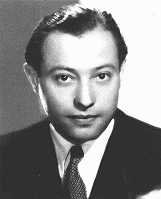
-
Leo Nitschke
ID CardLeo was one of two children born to Jewish parents in the Moravian capital of Brno. When Leo was a child his father died, and Leo and his sister, Edita, were raised by their German-born mother. On November 27, 1931, Leo graduated with a law degree from Brno University. 1933-39: After courting Hilda Krakauerova, a dental technician, Leo married her on December 23, 1935. Leo served as a district judge in Brno and in the town of Postejov, and in 1938 he was appointed judge and secretary to the Moravian…
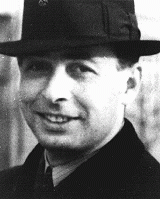
-
Laszlo Schwed
ID CardLaszlo was raised by Hungarian-speaking Jewish parents in the town of Kiskunfelegyhaza in southeastern Hungary. He opened a business selling goose meat, feathers, down and quilts. In 1931 he married Anna Mahrer, from Budapest, and they had a daughter in January 1932. 1933-39: Laszlo and Anna had a second child, a son. They raised their two children in a comfortable home. Kiskunfelegyhaza was located in a rural part of Hungary. In May 1939, the Hungarian government enacted a law that defined Jews as alien…
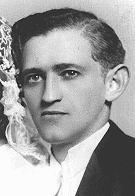
-
Reichstag fire
FilmThis footage shows the Reichstag (German parliament) building on the day after it was set on fire. While the origins of the fire on February 27 are still unclear, Hitler blamed Communists for the incident. The Reichstag Fire Decree of February 28, 1933, suspended constitutional guarantees. Communist and Socialist deputies were expelled from the parliament. Shortly after the decree was issued, the Nazis established concentration camps for the internment of political opponents.
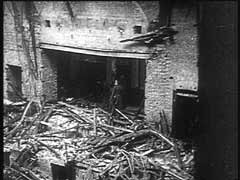
-
1931 studio portrait of Abraham Moshe Muhlbaum
PhotoAbraham and his family fled from Berlin to Amsterdam in October 1938. They found refuge in the Netherlands until January 28, 1943, when all the members of the Muhlbaum family, except Abraham, were deported to Westerbork. Abraham escaped over the rooftops during the round-up. He gradually established a new life as a member of a Dutch resistance group that included Joop Westerweel. In 1944, Abraham was arrested as a member of the resistance (his Jewish identity remained hidden). He was held…
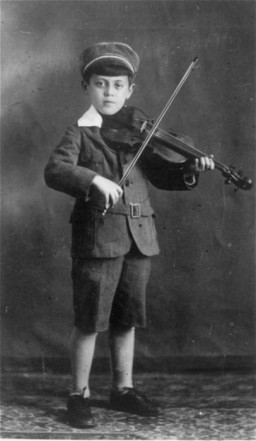
-
SS: Key Dates
ArticleKey dates in the history of the SS (Schutzstaffel; Protection Squadrons), charged with the leadership of the “Final Solution,” the murder of European Jews.

-
Krakow Ghetto: Key Dates
ArticleExplore a timeline of key events during the history of the Krakow ghetto in German-occupied Poland.
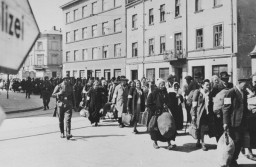
-
SS Police State
ArticleThe SS oversaw policing, intelligence, and the camp system in Nazi Germany. Learn more about the Schutzstaffel and its rise to power.
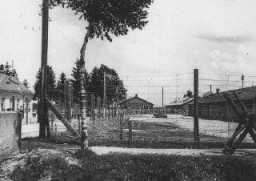
-
Hermann Ludwig Maas
ArticleHermann Ludwig Maas, a Protestant pastor in Heidelberg, Germany, was a rescuer and clergyman who stood in solidarity with the Jewish community.
